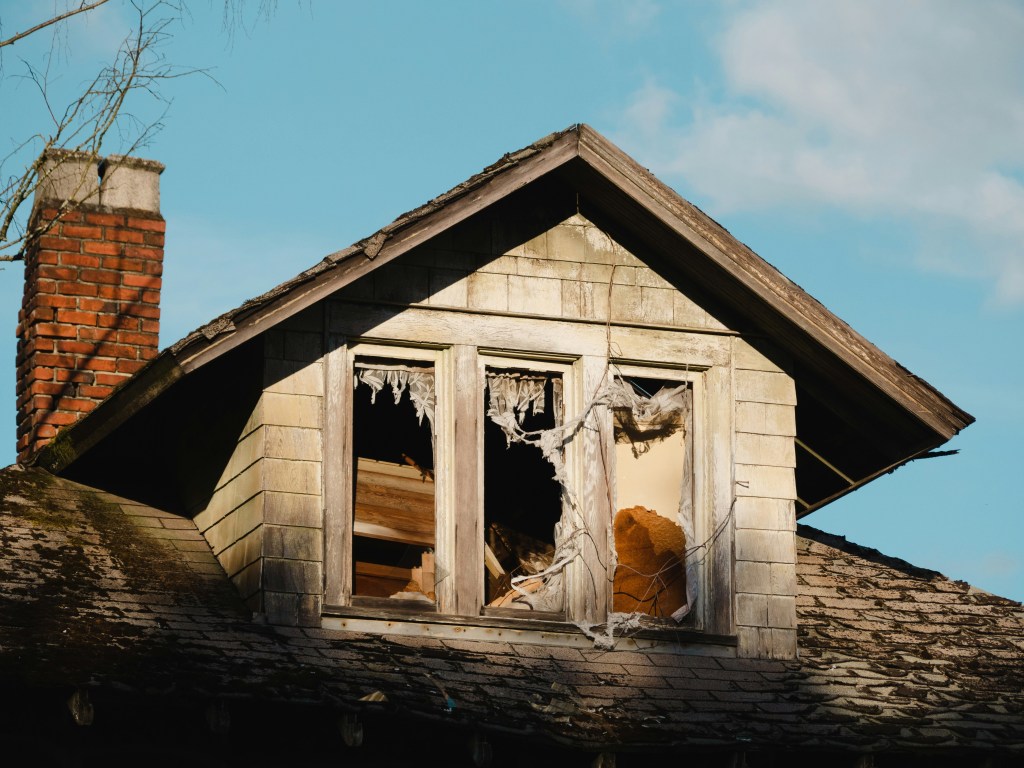Strategies for Dealing with Vandalism and Squatters in Vacant Properties

Vacant property owners encounter challenges, with one of the primary concerns being the risk of vandalism and unauthorized occupancy. When a property sits empty for an extended period, it can attract unwanted attention, making it susceptible to squatters and vandalism. This poses a security threat, significant financial implications, decreased property values, and legal issues for the owner.
In this blog, we will explore various vandalism prevention tips and highlight the potential damage and costs associated with unauthorized occupancy. Understanding how to identify signs of squatters is crucial for property owners, as early detection can often lead to more effective mitigation strategies. By implementing proactive measures, owners can better protect their investments and maintain the integrity of their properties.
It is important to note that this blog is intended for informational purposes only. Property owners experiencing issues with unauthorized occupants should consult with an attorney and contact their local authorities for guidance and support in addressing these challenges. Acting promptly can help restore peace of mind as you navigate property ownership.
Identifying Vulnerabilities: Why Vacant Properties Attract Vandalism and Squatters
Vacant properties often become prime targets for various vulnerabilities, attracting both vandalism and unauthorized occupants. It’s essential for property owners and community members to understand the factors contributing to these risks.
Vandalism and vacant properties
Vandalism, for instance, is the intentional destruction of property, often stemming from boredom, anger, or malicious intent. Vacant buildings become targets for individuals seeking an outlet for their frustrations or emotional distress, leading to damages for the property owner.
Unauthorized entry
Squatting is another issue associated with vacant buildings and properties. It occurs when individuals occupy empty buildings, or unoccupied property without the property owner’s consent or knowledge, and are not paying rent. The reasons behind squatting are multifaceted, including homelessness, the high cost of living, and political motivations.
Shelter squatters often seek refuge in these spaces out of necessity, driven by the lack of available housing options. In some areas, laws may afford squatter’s rights, making it complicated for property owners to reclaim their spaces.
On the other hand, political squatters use vacant homes as a form of protest in extreme cases. Their actions aim to draw attention to high living costs and advocate for affordable housing solutions. This group often engages with the community to raise awareness and influence policy changes, highlighting the critical intersection of housing, social justice, and legislative reform.

Prevention First: Securing Vacant Properties to Deter Unwanted Activity
Effective prevention strategies are crucial in maintaining a vacant property’s security. Implementing physical security measures, utilizing alarms, and fostering neighborhood collaboration can significantly reduce the risk of vandalism and break-ins.
Preventative measures play a key role in preserving the property’s condition. Regular visits to check on the premises are essential; during these visits, take the time to conduct thorough inspections of entry points, pick up mail, and tidy up the area. Make sure to conduct regular maintenance as well.
Vacant property security
A comprehensive solution is installing automatic lights both inside and outside the vacant property. This can enhance safety by creating the appearance of occupancy. Additionally, producing a lived-in presence can deter potential intruders – this can be achieved by placing secure chairs on the front porch, decorating for holidays, and using a radio to simulate sounds of everyday life.
Security systems
Investing in a robust home security system significantly enhances property safety. Features such as real-time monitoring and remote monitoring ensure constant vigilance, while motion detectors and alarm systems actively alert property owners to any break-ins or emergencies. Additionally, security systems can also alert emergency services in case of an emergency.
Leveraging technology
It’s also advisable to change locks when tenants leave and to consider modern alternatives like key fobs, security cards, passwords, or mobile apps, especially in multi-unit settings. In certain cases, installing security fencing can add an extra layer of protection, making vacant properties less appealing to potential intruders and would-be vandals.

The Legal Landscape: Navigating Squatter Rights and Property Laws
Property owners often encounter complex legal challenges when dealing with squatters, particularly regarding squatter rights and the legal eviction process. The laws surrounding squatters’ rights can vary significantly from one state or locality to another.
Adverse possession laws
One key concept to understand is “adverse possession,” which can, in certain circumstances, allow a squatter to claim ownership of a vacant property if they have occupied it for a specified period. However, this typically comes with strict requirements.
Generally, when referring to squatters’ rights, it is the legal allowances that enable squatters to occupy a building or piece of land and potentially claim ownership through adverse possession. Specific conditions often need to be met for a squatter to establish their claim.
Key elements of squatter’s rights include open and notorious use, meaning the squatter’s occupation is obvious to neighbors and the owner; exclusive possession, indicating no sharing with others; continuous possession, requiring uninterrupted occupancy for a specific duration; and hostile possession, which refers to unauthorized occupation of the property.
State and local laws
Different states have unique statutes regarding these rights. For instance, in California, a squatter must continuously occupy the property for five years and pay property taxes to qualify for adverse possession. In New York, the timeframe extends to ten years, while Texas requires a minimum of ten years but reduces this to five years if the squatter pays property taxes and claims the land under a “color of title.”
Removing squatters
Navigating the eviction process can also be daunting, as each state has its own specific regulations and procedures. Property owners may need to consult their local laws to understand how to legally remove squatters from their property.
In some instances, local law enforcement may be required to ensure the eviction occurs safely and legally. Seeking guidance from a real estate attorney can be a legal resource and assistance throughout the process.

Safe and Legal Eviction: How to Remove Squatters Without Escalating the Situation
To ensure a safe squatter eviction, it’s important to follow practical steps that comply with legal requirements while effectively removing squatters from your property.
Initiate the eviction process
If you discover that a squatter is occupying your vacant property, it’s crucial to initiate the eviction process immediately. The longer a squatter remains in your property, the more difficult it becomes to remove them.
In addition to increasing the chances of a squatter claiming legal ownership via adverse possession, prolonged occupancy can result in lost rental income, potential damage to your property, and escalating legal costs.
To begin the process of evicting a squatter, it’s typically necessary to serve them with an eviction notice. The American Owners Association (AAOA) advises that you consult a real estate attorney who can provide guidance tailored to your locality, as laws can vary significantly based on location.
Contact local law enforcement
Additionally, notifying your local police is a key step. Once you identify squatters in your property, inform the police that they are occupying it without your consent. This police report will serve as evidence that you’ve made an effort to involve law enforcement in the situation, which can help strengthen your case for eviction.
Eviction proceedings
The first step in the eviction process is to serve a formal eviction notice to the squatter, ideally with assistance from a real estate attorney. If the squatter fails to leave after receiving the formal notice, the next phase involves filing an eviction lawsuit. Should the court rule in your favor, a local sheriff may be ordered to remove the squatter lawfully.
Be aware that in some states, landlords must provide written notice before removing any of the squatter’s possessions from the property. Ensuring that you follow the legal procedures is vital for a successful eviction while maintaining your safety and safeguarding your property rights.

Responding to Vandalism: Immediate Actions and Long-term Restoration
Addressing vandalism promptly is essential to mitigating its impact on property value and ensuring neighborhood safety. Response strategies include prompt property damage restoration and thorough cleanup to minimize the visual and physical effects of vandalism. Quick action helps restore the property’s appearance and demonstrates to the community that such acts will not go unaddressed.
Vacant property security
Engaging with neighbors is crucial if you find yourself a target of vandalism. Informing those around you fosters a sense of community vigilance, encouraging residents to keep an eye out for suspicious activities and potentially preventing future incidents. Community engagement can create a safer environment by promoting awareness and collective responsibility.
Security measures are one of the most effective deterrents against vandalism. Installing fencing, placing security signs, and setting up security cameras can greatly enhance property protection. Securing all entry points and, in some cases, installing metal door jamb shields further fortifies the property against intrusions. Additionally, hiring security guards can provide an extra layer of protection.
Contacting insurance and authorities
Reporting incidents to local authorities is another vital step. Not only does this help track and address vandalism trends in the area, but documenting the incident is essential for filing claims with your vacant property insurance provider. By having an official record of vandalism, you can ensure better assistance and coverage during the claims process.
Prompt repair
Finally, prompt repair or cleaning of any damage is critical after you have documented and reported the incident. Swiftly addressing these issues not only improves the property’s appearance but also helps mitigate the risks of further vandalism, reinforcing the message that the community values its surroundings and will not tolerate such behavior.

Conclusion: A Proactive Approach to Managing Vacant Properties
Implementing key strategies that focus on proactive vacant property management is crucial to effectively prevent future issues related to vacant properties. This includes developing clear vacant home strategies that address maintenance, security, and community engagement.
Property owners or property managers can mitigate potential risks such as vandalism, deterioration, and safety hazards by implementing vacant property security strategies and remaining vigilant. Furthermore, it is essential to be collaborative with the community, ensuring that emerging challenges are addressed promptly and maintaining the integrity of our communities.
This article is intended for informational purposes only and you should not interpret anything contained in it as legal advice. J.H. Ferguson & Associates, LLC, its parents, affiliates, and anyone connected with them are not responsible or liable in any way for your use of the information contained in or linked to from this article. Reliance on the information provided in this article is solely at your own risk. If you have questions about property laws or any of the topics addressed in the article, you should contact an attorney or subject-matter expert.
Sources
https://www.showdigs.com/property-managers/the-risks-of-unoccupied-vacant-properties#:~:text=In%20addition%20to%20legal%20costs,%2C%20floors%2C%20or%20other%20fixtures.
https://www.linkedin.com/pulse/understanding-squatter-behavior-types-homes-seek-b-collins-ii-5lise/
https://www.dicklawfirm.com/blog/2022/december/what-is-vandalism-and-malicious-mischief-insuran/
https://www.americanalarm.com/blog/top-tips-for-securing-vacant-properties-024207
https://www.bellastaging.ca/blogs/news/understanding-squatter-rights-in-the-united-states#:~:text=Despite%20the%20lack%20of%20legal,for%20a%20certain%20period%2C%20which
https://www.stessa.com/blog/how-to-get-rid-of-squatters/
https://condominiumassociates.com/blog/how-to-deal-with-vandalism-in-your-community
https://www.bossecurity.com/2024/09/01/top-strategies-for-vacant-property-security/

